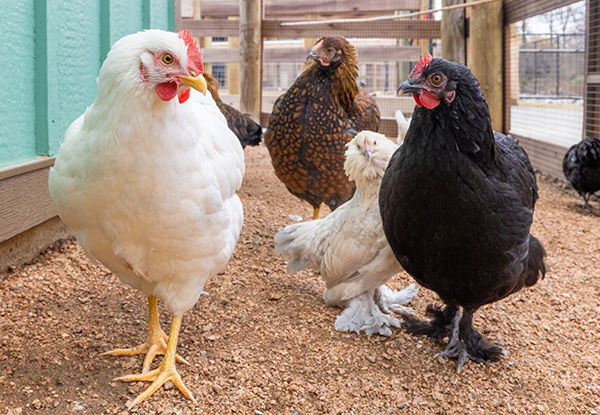Domestic Chicken
Today’s ~500 breeds of domestic chickens descended from the red junglefowl of Southeast Asia.
Day of Creation: five
Biblical Kind: landfowl (includes all landfowl species)
Status: domesticated
Height: 0.8–3.5 feet (0.25–1 meter)
Weight: 1–15 pounds (0.5–6.8 kilograms)
Habitat: Southeast Asia, but domesticated worldwide
Lifespan: 5–15 years
Diet: seeds, fruits, worms, insects, small vertebrates
Family Life: live in flocks
Reproduction: 10–15 eggs hatch after 21-day incubations
Fun Facts
Domestic chickens have been raised for eggs and meat for thousands of years. They also make excellent pets, as they are social, curious, and smart birds. People have selectively bred chickens for a variety of unique colors, feather types, body shapes, and purposes.
Chickens vary greatly in size. The smallest breed is the Malaysian serama, which stands no more than 10 inches (25 centimeters) tall and weighs less than one pound (0.5 kilograms). The tallest breeds, like the Indio gigantes and Malays, may stand over three feet (0.9 meters) tall, while the heaviest breeds, like the Brahmas and Jersey giants, may weigh over 15 pounds (6.8 kilograms). The ornamental Onagadoris from Japan may have tail feathers approaching 40 feet (12.2 meters) long.
Contrary to popular belief, chickens are intelligent. They can recognize over 100 different faces, solve problems, and be trained just like dogs. They can make over 30 different noises when “talking” to each other. Each sound means something different.
The eyes of chickens are designed to see more colors and sense motion better than humans do, which helps them avoid danger.
Chickens experience rapid eye movement and act like they are chasing things in their sleep, which suggests they may dream.
